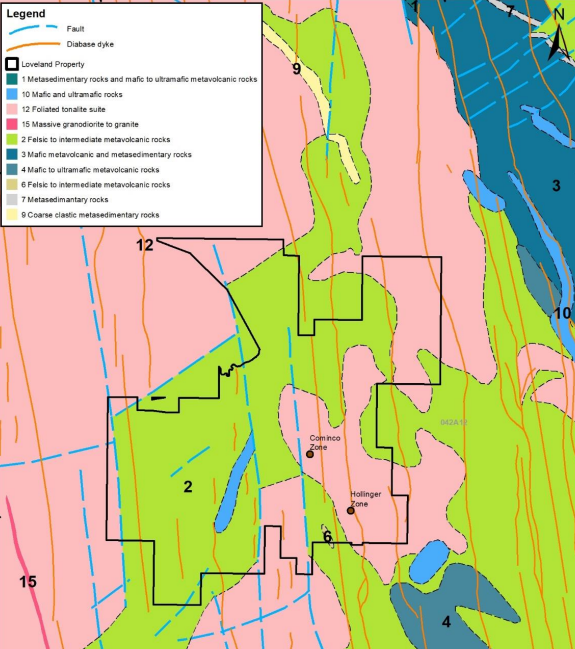
The Loveland property is underlain by volcanic rocks of the Kidd-Munro Assemblage, intruded by gabbroic and ultramafic bodies with limited surface exposure. Geology is interpreted from outcrop, drilling and geophysical surveys, highlighting a favourable setting for both magmatic nickel-copper and lode gold systems.
Nickel and copper mineralization occurs as semi-massive to massive sulfides—primarily pyrrhotite, chalcopyrite, and pentlandite—within gabbroic intrusions and along volcanic contacts. Two historical zones, the Hollinger Zone (422,350 tonnes at 0.71% Ni and 0.42% Cu) and Cominco Zone (130,000 tonnes at 0.73% Ni and 0.68% Cu), remain open for expansion.
Gold mineralization was also intersected beneath the Cominco Zone in altered granodiorite, with notable intercepts including 10.39 grams per tonne gold over 3.1 metres and surface samples returning up to 11.48 grams per tonne gold. These results support Loveland’s potential as a dual-target property for both critical and precious metals.